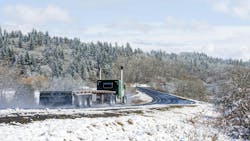Fontana: Disaster planning needs to start on a clear, sunny day
It seems that we are not only having a lot more storms, hurricanes, and tornadoes but that the destruction from those events is intensifying. Hurricane Helene is the most recent example. Not only were lives lost and homes destroyed, but portions of roads and highways collapsed. Some of them will take months, if not years, to repair.
One lesson learned from all these storms is that you need a disaster plan no matter where your business is located. You can’t wait to come up with a plan until you receive an alert about an impending severe weather event. Your plan needs to be developed on a clear, sunny day when things are calm and you have time to consider your options.
First, do not ignore any severe weather warnings. It is better to take precautionary measures if an event does not materialize or loses steam once it reaches your area than to ignore warnings and put people and equipment at risk.
Once a disaster hits, basic infrastructure may be impacted, and you may be unable to fuel your trucks. Therefore, when you get a weather alert, take time to fill the tanks on your trucks in case fuel becomes scarce or unavailable right after the disaster.
See also: How fleets should prepare for adverse weather
If possible, move the trucks and trailers out of the storm’s path. If you have multiple locations, have a plan to get equipment out of harm’s way and to a safer location for the duration of the storm. If possible, move your equipment to higher ground and position it in a way that will protect it from high winds.
Make sure your drivers and technicians are safe. Suspend deliveries so that drivers are not on the road during storms. The safety of your people should be your number one priority. Do not resume deliveries until you get the all-clear signal from officials. Make sure you keep updated on road closures and reroute drivers around areas that are flooded or have downed trees or powerlines. Allow technicians to leave work if the weather situation in your region is dangerous. They should only return to work once it is safe to do so.
Although hurricanes have been in the news lately, it soon will be winter in many parts of the country. Be prepared to deal with major winter storms with their high winds, subzero temperatures, and significant snow accumulations.
Your disaster plan should cover disasters that could impact your area so you will be well prepared regardless of what Mother Nature throws your way.
About the Author
Gino Fontana
Chief operating officer and executive vice president at Transervice Logistics Inc.
Gino Fontana, CTP, is COO and EVP at Transervice Logistics Inc. His operational expertise emphasizes cost savings, process efficiency and improvement, superior quality, and people management skills. He has more than 35 years of experience in the transportation and logistics industry with both operational and sales experience.
